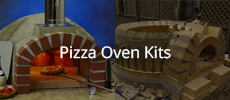Re: 3:1:1:1
C-270 deals with mortar, it doesn't matter if it is for Antarctica or for your oven, the physical properties required for unitary masonry apply. That said, it does not apply to Calcium Aluminate mortar which is what refractory cement is. The points I am making as referenced by C-270, however, do apply to refractory mortar, i.e. the desired strength and workability.
Refractory mortar physical properties are defined in C-199, which would not allow you to use homebrew at all.
X
-
Re: 3:1:1:1
I cant believe how many ppl have got their knickers in a knot just because TS made the suggestion that the home brew mortar is way too strong?
Leave a comment:
-
Re: 3:1:1:1
1985 diethylene glycol wine scandal - Wikipedia, the free encyclopediaOriginally posted by Laurentius View PostDon't know about that, but sick ---ks, use to kill people's pet by placing it about for them to lap up.
Leave a comment:
-
Re: 3:1:1:1
Don't know about that, but sick ---ks, use to kill people's pet by placing it about for them to lap up.Originally posted by brickie in oz View PostDidnt they used to put it in wine in Europe some time ago?
Leave a comment:
-
Re: 3:1:1:1
Didnt they used to put it in wine in Europe some time ago?
Leave a comment:
-
Re: 3:1:1:1
Yes, you are! If the first bottle he ever drank had been anti-freeze, he would have never spent a penny on whiskey.Originally posted by Tscarborough View PostNo, I am telling you that if you applied whiskey principles to anti-freeze you would be dead.
Leave a comment:
-
Re: 3:1:1:1
No, I am telling you that if you applied whiskey principles to anti-freeze you would be dead.
Leave a comment:
-
Re: 3:1:1:1
The reality is that there are very few engineers trained in unitary masonry. They study concrete, and concrete (contains cement) and unitary masonry (contains cement) are not the same thing any more than anti-freeze (contains alcohol) and whiskey (contains alcohol) are the same.
The rule for mortar is to always use the absolute weakest mortar that will suffice, and this is antithetical to a concrete engineer. Mortar should ALWAYS have less compressive strength than the units it is binding together. Mortar is not harmed by excess water or retempering, both of which are opposite to concrete.
Using a 3:1:1:1 will work, but the question remains: Is that the proper or best mix? The answer is no. Just as the shape and dimensions of a Pompeii oven have evolved and been fine tuned over the centuries, so has the art of making mortar. It is only in the last 100 years that the art of mortar has been confused with the science of concrete and therein lies the confusion.
Mortar specifications are broad for a reason, and that reason is that the mortar must be prepared for the conditions, not to a narrow definition such as compressive strength.
If you doubt that this is so, study ASTM C-270 which is the ruling specification for mortar.
Leave a comment:
-
Re: 3:1:1:1
That's the way many neapolitan domes are professionally built.Originally posted by brickie in oz View Post
Id be happy to dry stack the bricks and then slurry around the outside to keep it all together.
Leave a comment:
-
Re: 3:1:1:1
I actually dont like to see mortar joints inside an oven its the point of failure.
Some builds on here must think they are building a house the joints are that big.
Id be happy to dry stack the bricks and then slurry around the outside to keep it all together.
I used pre made thin joint refractory bog on my build and you need a feeler gauge to measure the joints.
Leave a comment:
-
Re: 3:1:1:1
This is exactly what I found when I demolished my first oven to build a bigger one. When I tried to chip the mortar off the bricks broke before the mortar gave. I finally resorted to cutting the mortar off the bricks I planned to reuse.Lime is considered cementitious, and arguably the fire clay, since it doesn't get fired hot enough, is not. So at this point we might argue the ratio of sand+clay to cement + lime is 2:1 in the homebrew. A very rich mix indeed if you are building a house. If anything moves the bricks might break before the mortar gives.
Leave a comment:
-
Re: 3:1:1:1
May as well get it right and not confuse the issue. Use 6:1:1:1 and you will be a lot closer to a good starting point than 3:1:1:1.
Leave a comment:
-
Re: 3:1:1:1
That is great but the ratios are intended to be a guide for making up the mix and not the actual end result. Lets keep referring to 3/1/1/1 and we will not confuse the issue.Originally posted by Tscarborough View Post3:1:1:1:1 is not really correct either, it is 3 parts sand by volume of the cementious ingrediants, and lime is considered a cementious ingredient, so the actual ratio is: 6:1:1:1.
Chip
Leave a comment:






Leave a comment: